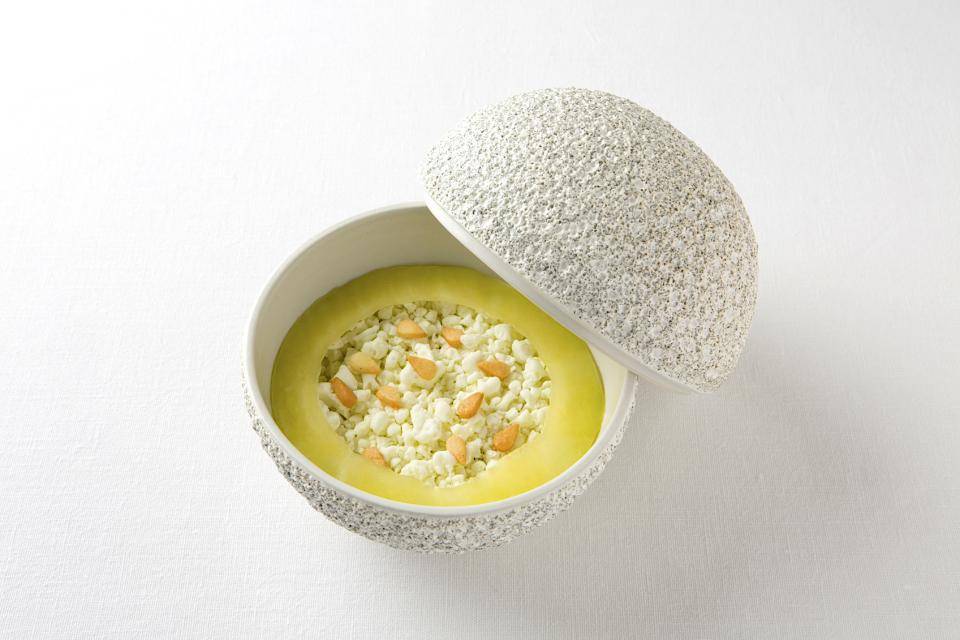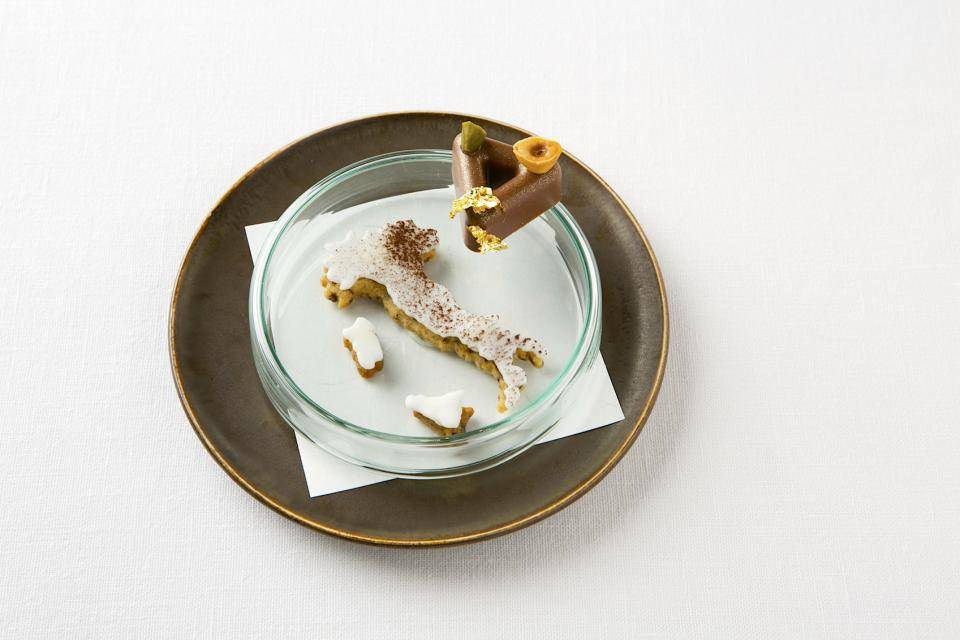Fabrizio Fiorani, the head pastry chef at the Bulgari Il Ristorante Luca Fantin in Tokyo
His career started in Italy, where he was born. There, Fabrizio Fiorani was working with some of the greatest Italian chefs at the most prestigious establishments. Then he moved to Tokyo and is now taking care of the sweet delights at the Bulgari Il Ristorante Luca Fantin in Tokyo, along side the very inspiring executive chef Luca Fantin. His story is a story of two very strong food cultures.

You worked at some of the best Italian restaurants. How did you fall in love with pastry?
My love for pastry was born when I, as a child during my summer vacation, started working in a small gelato shop close to Rome. My passion and desire to learn took me later on to La posta Vecchia in Palo Laziale (in Italian Lazio) and Il Pellicano at Porto Ercole (Tuscany), followed by the three Michelin starred La Pergola in Rome and l’Enoteca Pinchiori in Florence.
Where and how did you learn the mastery?
At La Pergola in Rome I learnt the basics of traditional pastry. My responsibility at the beginning of my Roman experience was to create peteit fours - twelve great classics of the European pastry. At Enoteca Pinchiorri, another great internationally acclaimed restaurant, I further developed my pastry skills and creativity.
Who was your best mentor?
I have a very strong connection with my current Executive Chef Luca Fantin. In the two years that I am working with him I have learnt a lot - technically as well as conceptually. A very important part of my growth happens every time we change our tasting menu. In the pursuit of perfection we all taste the whole tasting menu together before offering it to our clients, so we can modify the dishes if needed. I want the desserts to be in complete harmony with the idea of the menu and the philosophy of the restaurant.
You moved to Japan from Italy. How did it happen?
After my long Roman experience I had a great desire for a change and just at the right moment Heinz Beck offered me the chance to take part in the opening of two new restaurants in Tokyo. This was the most important step in my career.

Was it hard to get used of the new culture and traditions?
The civility you can breath in the streets of Tokyo, the education of the Japanese people and the great respect and consideration towards our work were the fundamental factors which made me embrace the Japanese culture very easily.
As an Italian in Japan, what do you see as the biggest differences between the Italian and Japanese palate and what are the greatest differences between the two cultures at the table?
What the two cultures have in common is the ability to recognize good quality produce, they also have a memory for flavours - the traditional ones as well as the more innovative.
On the other side I see a great divergence in pastry in terms of flavours and textures. Surprisingly I see combinations of very bitter flavours with very sweet ones. Regarding textures instead - the Japanese prefer the softnes over the criunchiness.
How do you, as an Italian in Tokyo unite both cultures in your pastry?
I am constantly exploring the best produce available on the Japanese market. At the same time it’s true that I am looking only for ingredients which are also available in the Italian culture. So for example I never use yuzu or matcha powder.
Is there anything that works well in Italian pastry but would not work in Japanese or vice versa?
I believe that the pursuit for quality and great flavours are universal, and are also the main goal in my creativity, I’m quite sure that desserts which I am creating here, would be enjoyed in the same way in Italy or elsewhere in Europe, as they are here.
How would you describe your personal style and philosophy?
My main attention is dedicated to the selection of ingredients, technical innovation and interaction with the client. All this should offer to our clients a very unique sweet experience.

Your favourite Italian and Japanese ingredients?
Being very passionate about great ingredients I love to take the best from both worlds:
I was for example enchanted by the fantastic raw milk from Hokkaido and the sweet figs from Nigata Prefecture, but at the same time I can’t resist an extremely creamy mascarpone which we are sourcing from Veneto, Italy.
And chocolate?
Chocolate is one of my favourite ingredients - be it from the technical point when used for pralines or decorations, as well as a basic ingredient for desserts we are serving in the form of cremeaux, mousse and ice-creams.
How do you like using it at work and how do you like to enjoy it yourself?
A high quality chocolate is a great medium for expressing my own creativity - fluidity, constancy in the working process and intensity of flavour are the main characteristics of a quality product.
I like to enjoy it in a very Italian way, I simply unwrap the chocolate bar and put it between two slices of bread with a bit of Maldon salt and it’s done.
Which is your favourite Cacao Barry chocolate right now?
My favourite Cacao Barry product is very unique, Mycryo cacao butter.
It’s very easy to use, technically perfect and always consistent quality wise. All this makes it an exceptional product.
I was also very impressed by the new Cacao Barry Ruby chocolate. I love its fruity taste (acidity which is typical for red fruits) and an attractive colour which is all natural - without any artificial colorants.
What was your greatest success?
I’m very happy to be part of the Accadeimia Maestri Pasticceri Italiani (The Academy of Italian Pastry Masters) since March. I am very proud to be one of the first pastry chefs who received this recognition.
Do you have any golden dreams?
I am very humble and like to keep myself grounded, but I would be very proud if I was nominated as the best pastry chef of the Asian 50 best restaurants. Also because I believe that restaurant pastry should be recognised in the same way as the boutique pastry, which sadly happens rarely.

Comments